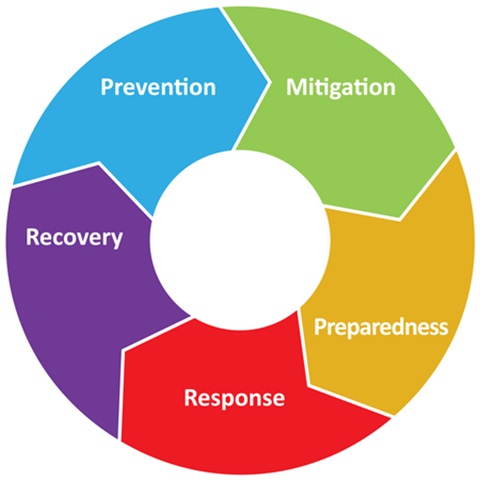About Us

Vision
The Yavapai County Office of Emergency Management seeks to promote a safer, less vulnerable community with the capacity and resilience to cope with hazards and disasters.
Mission
The Yavapai County Office of Emergency Management's mission is to reduce the impact of disasters, whether natural or man-made, by prioritizing the preservation of life, prevention of injuries, and protection of property and the environment. We are committed to continuously improving our emergency management program, focusing on outreach, coordination, planning, training, and exercises that cover all hazards and all phases of emergency management, including mitigation, preparedness, response, and recovery.
Guiding Principles
Ensure the readiness and resilience of our community. Facilitate a collaborative and coordinated response among agencies. Sustain a resilient local government.
Prevention
“A secure and resilient nation with the capabilities required across the whole community to prevent, protect against, mitigate, respond to, and recover from the threats and hazards that pose the greatest risk.” - National Preparedness Goal
Actions taken to avoid an incident. Stopping an incident from occurring. Deterrence operations and surveillance.
Mitigation
Refers to measures that prevent an emergency, reduce the chance of an emergency happening, or reduce the damaging effects of unavoidable emergencies. Typical mitigation measures include establishing building codes and zoning requirements, installing shutters, and constructing barriers such as levees.
Preparedness
Activities increase a community's ability to respond when a disaster occurs. Typical preparedness measures include developing mutual aid agreements and memorandums of understanding, training for both response personnel and concerned citizens, conducting disaster exercises to reinforce training and test capabilities, and presenting all-hazards education campaigns.
Response
Actions carried out immediately before, during, and immediately after a hazard impact, which are aimed at saving lives, reducing economic losses, and alleviating suffering. Response actions may include activating the emergency operations center, evacuating threatened populations, opening shelters and providing mass care, emergency rescue and medical care, fire fighting, and urban search and rescue.
Recovery
Actions taken to return a community to normal or near-normal conditions, including the restoration of basic services and the repair of physical, social and economic damages. Typical recovery actions include debris cleanup, financial assistance to individuals and governments, rebuilding of roads and bridges and key facilities, and sustained mass care for displaced human and animal populations.